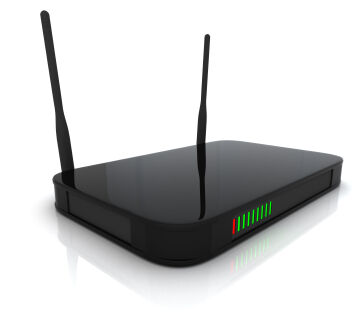
Cisco wireless has developed a glossary to define Cisco wireless terms and acronyms that are essential to understanding the Internet official definitions. This Cisco wireless terms and acronyms guide is the first dictionary of its kind that is specifically targeted as being a comprehensive Internet and wireless resource of terminology. These definitions are long, precise, and complicated; but they are aimed at being the industry standard.
Cisco Wireless Terms and Acronyms
Below are some of the definitions that were created by Cisco to explain wireless terms and acronyms.
- AAA - Authentication, Authorization and Accounting
- Authentication confirms a user who is requesting services is a valid user of the network services requested.
- Authorization is the process of denying or permitting a client permission to do something on the network, such as accessing a file.
- Accounting is the process of tracking a user's time, possibly for internal billing purposes.
- Antenna - The element used in a wireless device or system to transmit and receive radio signals. Antennas come in many forms and sizes and can be omnidirectional, sector/semidirectional, or highly directional.
- AP - Access point - A hardware device or wireless adaptor that functions as a communication hub allowing wireless devices to interconnect.
- AS - Authentication Server - An entity that provides an authentication service to an Authenticator. This service determines, from the credentials provided by the Supplicant, whether the Supplicant is authorized to access the services provided by the Authenticator.
- CAPWAP - Control and Provisioning of Wireless Access Points - Addresses standardization of lightweight access point control and defines how WLAN data traffic is managed over the backend network.
- Cell surfing - The "long ride" effect a Wi-Fi client incurs when it remains associated to a distant AP and does not roam after moving into a cell on the same channel, even after traversing a cell on a different channel.
- DA - Destination Address
- Domain name - The text name that refers to a grouping of networks or network resources based on organization-type or geography.
For example:
- name.com - Commercial
- name.edu - Educational
- name.gov - Government
- ISPname.net - Network provider (such as an ISP)
- name.ar - Argentina
- name.au - Australia
- EAP - Extensible Authentication Protocol - An optional security feature ideal for organizations with a large user base and access to an EAP-enabled Remote Authentication Dial-In User Service (RADIUS) server. A general authentication protocol used to control network access without relying on the network OS. Many specific authentication methods work within this framework, such as certificates, passwords, and tokens.
- LAN - Local Area Network - A high-speed, data network covering a relatively small geographic area (up to a few thousand meters). LANs connect workstations, peripherals, terminals, and other devices in a single building or other geographically limited area that make up your local network. LAN standards specify cabling and signaling at the physical and data link layers of the OSI model.
- MAC - Medium Access Control - The address that defines the protocol to a shared media to let a device access a specific network.
- MPDU - MAC Protocol Data Unit
- MSDU - MAC Service Data Unit
- Packet - A basic message unit for communication across a network. A packet usually includes routing information, data, and sometimes error detection information.
- RA - Received Address
- Unicast - A way to send data to a single, attached network device.
- When applied to a medium access control (MAC) service data unit (MSDU), it is an MSDU with a single recipient address as the destination address (DA).
- When applied to a MAC protocol data unit (MPDU) or control frame, it is an MPDU or control frame with a single recipient address as the receiver address (RA).
- WLAN - Wireless Local Area Network - A network that uses radio frequency to send and receive data.
The above information on these terms and abbreviations is from the Cisco Wireless Glossary, a detailed source for explanation of wireless terms.